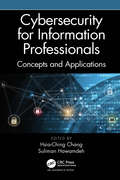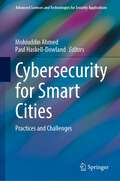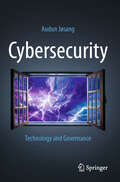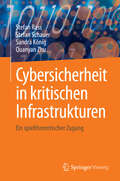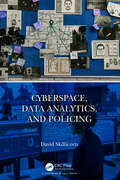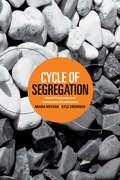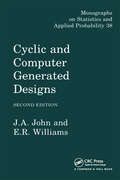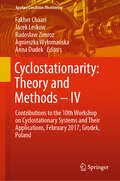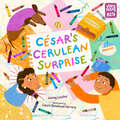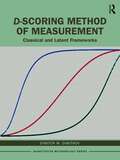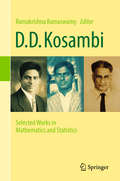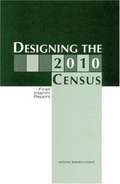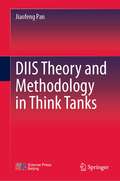- Table View
- List View
Cybersecurity for Information Professionals: Concepts and Applications
by Hsia-Ching ChangInformation professionals have been paying more attention and putting a greater focus on privacy over cybersecurity. However, the number of both cybersecurity and privacy breach incidents are soaring, which indicates that cybersecurity risks are high and growing. Utilizing cybersecurity awareness training in organizations has been an effective tool to promote a cybersecurity-conscious culture, making individuals more cybersecurity-conscious as well. However, it is unknown if employees’ security behavior at work can be extended to their security behavior at home and personal life. On the one hand, information professionals need to inherit their role as data and information gatekeepers to safeguard data and information assets. On the other hand, information professionals can aid in enabling effective information access and dissemination of cybersecurity knowledge to make users conscious about the cybersecurity and privacy risks that are often hidden in the cyber universe. Cybersecurity for Information Professionals: Concepts and Applications introduces fundamental concepts in cybersecurity and addresses some of the challenges faced by information professionals, librarians, archivists, record managers, students, and professionals in related disciplines. This book is written especially for educators preparing courses in information security, cybersecurity, and the integration of privacy and cybersecurity. The chapters contained in this book present multiple and diverse perspectives from professionals in the field of cybersecurity. They cover such topics as: Information governance and cybersecurity User privacy and security online and the role of information professionals Cybersecurity and social media Healthcare regulations, threats, and their impact on cybersecurity A socio-technical perspective on mobile cybersecurity Cybersecurity in the software development life cycle Data security and privacy Above all, the book addresses the ongoing challenges of cybersecurity. In particular, it explains how information professionals can contribute to long-term workforce development by designing and leading cybersecurity awareness campaigns or cybersecurity hygiene programs to change people’s security behavior.
Cybersecurity for Smart Cities: Practices and Challenges (Advanced Sciences and Technologies for Security Applications)
by Mohiuddin Ahmed Paul Haskell-DowlandEnsuring cybersecurity for smart cities is crucial for a sustainable cyber ecosystem. Given the undeniable complexity of smart cities, fundamental issues such as device configurations and software updates should be addressed when it is most needed to fight cyber-crime and ensure data privacy. This book addresses the cybersecurity challenges associated with smart cities, aiming to provide a bigger picture of the concepts, intelligent techniques, practices and research directions in this area. Furthermore, this book serves as a single source of reference for acquiring knowledge on the technology, processes and people involved in the next-generation of cyber-smart cities.
Cybersecurity: Technology and Governance
by Audun JøsangThis book gives a complete introduction to cybersecurity and its many subdomains. It’s unique by covering both technical and governance aspects of cybersecurity and is easy to read with 150 full color figures. There are also exercises and study cases at the end of each chapter, with additional material on the book's website. The numerous high-profile cyberattacks being reported in the press clearly show that cyberthreats cause serious business risks. For this reason, cybersecurity has become a critical concern for global politics, national security, organizations as well for individual citizens. While cybersecurity has traditionally been a technological discipline, the field has grown so large and complex that proper governance of cybersecurity is needed. The primary audience for this book is advanced level students in computer science focusing on cybersecurity and cyber risk governance. The digital transformation of society also makes cybersecurity relevant in many other disciplines, hence this book is a useful resource for other disciplines, such as law, business management and political science. Additionally, this book is for anyone in the private or public sector, who wants to acquire or update their knowledge about cybersecurity both from a technological and governance perspective.
Cybersicherheit in kritischen Infrastrukturen: Ein spieltheoretischer Zugang
by Quanyan Zhu Stefan Rass Stefan Schauer Sandra KönigDieses Buch stellt ein Kompendium ausgewählter spiel- und entscheidungstheoretischer Modelle zur Erreichung und Bewertung der Sicherheit kritischer Infrastrukturen vor. Angesichts aktueller Berichte über Sicherheitsvorfälle verschiedenster Art lässt sich ein Paradigmenwechsel hin zu immer heterogeneren Angriffen erkennen. Hierbei werden verschiedene Techniken kombiniert werden, was zu einer fortgeschrittenen, anhaltenden Bedrohung führen kann. Sicherheitsvorkehrungen müssen diesen vielfältigen Bedrohungsmustern in ebenso vielfältiger Weise gerecht werden. Als Antwort darauf bietet dieses Buch eine Fülle von Techniken zum Schutz vor und zur Abschwächung von IT-Angriffen. Ein Großteil der traditionellen Sicherheitsforschung konzentriert sich auf bestimmte Angriffsszenarien oder Anwendungen und ist bestrebt, einen Angriff "praktisch unmöglich" zu machen. Ein neueres Sicherheitskonzept betrachtet die Sicherheit als ein Szenario, in dem die Kosten eines Angriffs den möglichen Nutzen übersteigen. Dies schließt die Möglichkeit eines Angriffs nicht aus, sondern minimiert die Wahrscheinlichkeit eines solchen auf das geringstmögliche Risiko. Das Buch folgt dieser ökonomischen Definition von Sicherheit und bietet eine managementwissenschaftliche Sichtweise, die ein Gleichgewicht zwischen Sicherheitsinvestitionen und dem daraus resultierenden Nutzen anstrebt. Es konzentriert sich auf die Optimierung von Ressourcen angesichts von Bedrohungen wie Terrorismus und fortgeschrittenen, anhaltenden Bedrohungen. Ausgehend von der Erfahrung der Autoren und inspiriert von realen Fallstudien bietet das Buch einen systematischen Ansatz für die Sicherheit und Widerstandsfähigkeit kritischer Infrastrukturen. Das Buch ist eine Mischung aus theoretischer Arbeit und praktischen Erfolgsgeschichten und richtet sich vor allem an Studenten und Praktiker, die eine Einführung in spiel- und entscheidungstheoretische Techniken für die Sicherheit suchen. Die erforderlichen mathematischen Konzepte sind in sich abgeschlossen, werden rigoros eingeführt und durch Fallstudien illustriert. Das Buch bietet auch Software-Tools, die den Leser bei der praktischen Anwendung der wissenschaftlichen Modelle und Berechnungsrahmen unterstützen. Dieses Buch ist eine Übersetzung einer englischen Originalausgabe. Die Übersetzung wurde mit Hilfe von künstlicher Intelligenz (maschinelle Übersetzung durch den Dienst DeepL.com) erstellt. Eine anschließende menschliche Überarbeitung erfolgte vor allem in Bezug auf den Inhalt, so dass sich das Buch stilistisch anders liest als eine herkömmliche Übersetzung.
Cyberspace, Data Analytics, and Policing
by David SkillicornCyberspace is changing the face of crime. For criminals it has become a place for rich collaboration and learning, not just within one country; and a place where new kinds of crimes can be carried out, and a vehicle for committing conventional crimes with unprecedented range, scale, and speed. Law enforcement faces a challenge in keeping up and dealing with this new environment. The news is not all bad – collecting and analyzing data about criminals and their activities can provide new levels of insight into what they are doing and how they are doing it. However, using data analytics requires a change of process and new skills that (so far) many law enforcement organizations have had difficulty leveraging. Cyberspace, Data Analytics, and Policing surveys the changes that cyberspace has brought to criminality and to policing with enough technical content to expose the issues and suggest ways in which law enforcement organizations can adapt. Key Features: Provides a non-technical but robust overview of how cyberspace enables new kinds of crime and changes existing crimes. Describes how criminals exploit the ability to communicate globally to learn, form groups, and acquire cybertools. Describes how law enforcement can use the ability to collect data and apply analytics to better protect society and to discover and prosecute criminals. Provides examples from open-source data of how hot spot and intelligence-led policing can benefit law enforcement. Describes how law enforcement can exploit the ability to communicate globally to collaborate in dealing with trans-national crime.
Cycle of Segregation: Social Processes and Residential Stratification
by Maria Krysan Kyle CrowderThe Fair Housing Act of 1968 outlawed housing discrimination by race and provided an important tool for dismantling legal segregation. But almost fifty years later, residential segregation remains virtually unchanged in many metropolitan areas, particularly where large groups of racial and ethnic minorities live. Why does segregation persist at such high rates and what makes it so difficult to combat? In Cycle of Segregation, sociologists Maria Krysan and Kyle Crowder examine how everyday social processes shape residential stratification. Past neighborhood experiences, social networks, and daily activities all affect the mobility patterns of different racial groups in ways that have cemented segregation as a self-perpetuating cycle in the twenty-first century. Through original analyses of national-level surveys and in-depth interviews with residents of Chicago, Krysan and Crowder find that residential stratification is reinforced through the biases and blind spots that individuals exhibit in their searches for housing. People rely heavily on information from friends, family, and coworkers when choosing where to live. Because these social networks tend to be racially homogenous, people are likely to receive information primarily from members of their own racial group and move to neighborhoods that are also dominated by their group. Similarly, home-seekers who report wanting to stay close to family members can end up in segregated destinations because their relatives live in those neighborhoods. The authors suggest that even absent of family ties, people gravitate toward neighborhoods that are familiar to them through their past experiences, including where they have previously lived, and where they work, shop, and spend time. Because historical segregation has shaped so many of these experiences, even these seemingly race-neutral decisions help reinforce the cycle of residential stratification. As a result, segregation has declined much more slowly than many social scientists have expected. To overcome this cycle, Krysan and Crowder advocate multi-level policy solutions that pair inclusionary zoning and affordable housing with education and public relations campaigns that emphasize neighborhood diversity and high-opportunity areas. They argue that together, such programs can expand the number of destinations available to low-income residents and help offset the negative images many people hold about certain neighborhoods or help introduce them to places they had never considered. Cycle of Segregation demonstrates why a nuanced understanding of everyday social processes is critical for interrupting entrenched patterns of residential segregation.
Cyclic and Computer Generated Designs (Chapman & Hall/CRC Monographs on Statistics and Applied Probability)
by J.A. John E.R. WilliamsCyclic and Computer Generated Designs is a much-expanded and updated version of the well-received monograph, Cyclic Designs . The book is primarily concerned with the construction and analysis of designs with a number of different blocking structures, such as revolvable designs, row-column designs, and Latinized designs. It describes how appropriat
Cyclostationarity: Contributions to the 10th Workshop on Cyclostationary Systems and Their Applications, February 2017, Grodek, Poland (Applied Condition Monitoring #16)
by Fakher Chaari Jacek Leskow Radoslaw Zimroz Anna Dudek Agnieszka WyłomańskaThis book gathers contributions presented at the 10th Workshop on Cyclostationary Systems and Their Applications, held in Gródek nad Dunajcem, Poland in February 2017. It includes twelve interesting papers covering current topics related to both cyclostationary and general non stationary processes. Moreover, this book, which covers both theoretical and practical issues, offers a practice-oriented guide to the analysis of data sets with non-stationary behavior and a bridge between basic and applied research on nonstationary processes. It provides students, researchers and professionals with a timely guide on cyclostationary systems, nonstationary processes and relevant engineering applications.
César's Cerulean Surprise (Storytelling Math)
by Jenny LacikaCelebrate diversity, math, and the power of storytelling!A math picture book series for preschoolers and kindergarteners with relatable stories that reflect little kids&’ everyday experience.César wants to borrow his little sister Gabi&’s brand-new cerulean crayon. She doesn't know what color that is, though, and she won't let him show her! Instead, she asks him yes-no questions to rule out crayons. It's like a game of 20 Questions—fun for Gabi and frustrating for César!A playful exploration of logic featuring Chicanx (Mexican American) characters and Spanish color words. Storytelling Math celebrates children using math in their daily adventures as they play, build, and discover the world around them. Joyful stories and hands-on activities make it easy for kids and their grown-ups to explore everyday math together. Developed in collaboration with math experts at STEM education nonprofit TERC.
D-scoring Method of Measurement: Classical and Latent Frameworks (Quantitative Methodology Series)
by Dimiter DimitrovD-scoring Method of Measurement presents a unified framework of classical and latent measurement referred to as D-scoring method of measurement (DSM). Provided are detailed descriptions of DSM procedures and illustrative examples of how to apply the DSM in various scenarios of measurement. The DSM is designed to combine merits of the traditional CTT and IRT for the purpose of transparency, ease of interpretations, computational simplicity of test scoring and scaling, and practical efficiency, particularly in large-scale assessments. Through detailed descriptions of DSM procedures, this book shows how practical applications of such procedures are facilitated by the inclusion of operationalized guidance for their execution using the computer program DELTA for DSM-based scoring, equating, and item analysis of test data. In doing so, the book shows how DSM procedures can be readily translated into computer source codes for other popular software packages such as R. D-scoring Method of Measurement equips researchers and practitioners in the field of educational and psychological measurement with a comprehensive understanding of the DSM as a unified framework of classical and latent scoring, equating, and psychometric analysis.
D.D. Kosambi: Selected Works in Mathematics and Statistics
by Ramakrishna RamaswamyThis book fills an important gap in studies on D. D. Kosambi. For the first time, the mathematical work of Kosambi is described, collected and presented in a manner that is accessible to non-mathematicians as well. A number of his papers that are difficult to obtain in these areas are made available here. In addition, there are essays by Kosambi that have not been published earlier as well as some of his lesser known works. Each of the twenty four papers is prefaced by a commentary on the significance of the work, and where possible, extracts from technical reviews by other mathematicians.
DESIGNING THE 2010 CENSUS: First Interim Report
by Panel on Research on Future Census MethodsA report on Designing the 2010 Census
DIIS Theory and Methodology in Think Tanks
by Jiaofeng PanThis book provides the readers with the overall latest research on think tanks, summarizing the characteristics of think tanks, revealing the general laws and internal logic of think tank research, applying systems, dialectical views and operations research, system theory, and cybernetics to the problems existing in the research work of think tanks at home and abroad. Based on problem-oriented, evidence-oriented and scientific orientation, this book systematically considers the methodology of think tank research, proposes the DIIS theoretical method system of think tank research, defines the standardization process of think tank research and the quality standard of think tank DIIS, and gives corresponding DIIS to the actual think tank research problem. The method aims to improve the scientificity, effectiveness, and reliability of the research results of think tanks, provide systematic theoretical analysis for think tank research, promote the professional development of think tanks, and better serve the modernization of national governance systems and governance capabilities. This book presents new theoretical and research method support and reference that contribute to macro decision-making departments, management departments, scientific research institutes, universities, and enterprises think tank research related departments, strategic decision makers, think tank managers, think tank researchers, and readers interested in think tanks reading and using. Finally yet importantly, this book embodies the research of think tank as the object of investigation, jumping out of specific social conditions, using systemic thoughts, thinking about the more general role and characteristics of think tanks from the theoretical level, important theoretical issues such as principles and logic systems that think tank research should follow.
DIY Project Based Learning for Math and Science
by Heather Wolpert-GawronAre you interested in using Project Based Learning to revamp your lessons, but aren’t sure how to get started? In DIY Project Based Learning for Math and Science, award-winning teacher and Edutopia blogger Heather Wolpert-Gawron makes it fun and easy! Project Based Learning encourages students and teachers alike to abandon their dusty textbooks, and instead embrace a form of curriculum design focused on student engagement, innovation, and creative problem-solving. A leading name in this field, Heather Wolpert-Gawron shares some of her most popular units for Math and Science in this exciting new collection. This book is an essential resource for teachers looking to: Create their own project-based learning units. Engage student in their education by grounding lessons in real-world problems and encouraging them to develop creative solutions. Incorporate role-playing into everyday learning. Develop real-world lessons to get students to understand the life-long relevance of what they are learning. Assess multiple skills and subject areas in an integrated way. Collaborate with teachers across subject areas. Test authentic skills and set authentic goals for their students to grow as individuals. Part I of the book features five full units, complete with student samples, targeted rubrics, a checklist to keep students on track, and even "Homework Hints." Part II is a mix-and-match section of tools you can use to create your own PBL-aligned lessons. The tools are available as eResources on our website, www.routledge.com/9781138891609, so you can print and use them in your classroom immediately.
DK Workbooks: Language Arts Math and Science Grade 2 (DK Workbooks)
by DKBoost your child's skills with fun activities and exercises that introduce key concepts in spelling, math, and science.Whether you want to teach your child at home, give them extra support outside the classroom, or find fun stimulation for your budding genius, this workbook has something for everyone. Home learning can be fun with these exercises, featuring drawing, puzzles, kitchen-science experiments, and more. This write-in book provides an introduction to key concepts and skills in literacy, numeracy, and science. To help the parent/carer, there are answer pages and notes providing further guidance; and there's no need to buy any specialist equipment or craft supplies - just pick up a pencil!With 60 activity pages to keep your child entertained as well as educated and a reward certificate on completion, there's something in a DK workbook for every child to learn and enjoy.
DK Workbooks: Language Arts Math and Science Grade 3 (DK Workbooks)
by DKBoost your child's skills with fun activities and exercises that introduce key concepts in spelling, math, and science.Whether you want to teach your child at home, give them extra support outside the classroom, or find fun stimulation for your budding genius, this workbook has something for everyone. Home learning can be fun with these exercises, featuring drawing, puzzles, kitchen-science experiments, and more. This write-in book provides an introduction to key concepts and skills in literacy, numeracy, and science. To help the parent/carer, there are answer pages and notes providing further guidance; and there's no need to buy any specialist equipment or craft supplies - just pick up a pencil!With 60 activity pages to keep your child entertained as well as educated and a reward certificate on completion, there's something in a DK workbook for every child to learn and enjoy.
DK Workbooks: Language Arts Math and Science Kindergarten (DK Workbooks)
by DKBoost your child's skills with fun activities and exercises that introduce key concepts in spelling, math, and science.Whether you want to teach your child at home, give them extra support outside the classroom, or find fun stimulation for your budding genius, this workbook has something for everyone. Home learning can be fun with these exercises, featuring drawing, puzzles, kitchen-science experiments, and more. This write-in book provides an introduction to key skills in literacy, numeracy, and science. To help the parent/carer, there are answer pages and notes providing further guidance; and there's no need to buy any specialist equipment or craft supplies - just pick up a pencil!With 60 activity pages to keep your child entertained as well as educated and a reward certificate on completion, there's something in a DK workbook for every child to learn and enjoy.
DK Workbooks: Learn and Explore (DK Workbooks)
by DKPLEASE NOTE - this is a replica of the print book, but you will be able to download printable worksheets on purchase.Perfect for kindergarteners, this workbook provides further practice in preparing children ages 5–6 for math in the school curriculum. Topics include counting to 20, first steps in addition and subtraction, naming 2D shapes, working with money, and telling time.Developed in consultation with leading educational experts to support curriculum learning, DK Workbooks: Math is an innovative series of home-learning math workbooks that is closely linked to school curriculum and helps make learning easy and fun.Each title is packed with exercises and activities to strengthen what children learn in school. With clear questions and supportive illustrations to help children understand each topic, the books provide practice to reinforce learning and understanding of key concepts, such as fractions, times tables, and shapes. A parents' section contains answers, tips, and guidance to provide support, and a certificate of achievement will reinforce confidence in kids by rewarding their accomplishments.
DK Workbooks: Learn and Explore (DK Workbooks)
by DKPLEASE NOTE - this is a replica of the print book, but you will be able to download printable worksheets on purchase.Perfect for children ages 7–8, this workbook builds confidence in growing math skills of second graders. Among new topics covered are adding two-digit numbers, number families, grouping, solving real-life problems, creating charts, and plotting line graphs.Developed in consultation with leading educational experts to support curriculum learning, DK Workbooks: Math is an innovative series of home-learning math workbooks that is closely linked to school curriculum and helps make learning easy and fun.Each title is packed with exercises and activities to strengthen what children learn in school. With clear questions and supportive illustrations to help children understand each topic, the books provide practice to reinforce learning and understanding of key concepts, such as fractions, times tables, and shapes. A parents' section contains answers, tips, and guidance to provide support, and a certificate of achievement will reinforce confidence in kids by rewarding their accomplishments.
DK Workbooks: Learn and Explore (DK Workbooks)
by DKPLEASE NOTE - this is a replica of the print book, but you will be able to download printable worksheets on purchase.Perfect for kindergarteners, this workbook introduces children ages 5–6 to solving simple math problems. Specific topics covered include working with numbers up to 20, 2D and 3D shapes, addition and subtraction, comparing sizes, and picture graphs.Developed in consultation with leading educational experts to support curriculum learning, DK Workbooks: Problem Solving is an innovative series of home-learning math workbooks that is closely linked to school curriculum and helps make learning easy and fun.Each title is packed with exercises and activities to strengthen what children learn in school. With clear questions and supportive illustrations to help children understand each topic, the books provide practice to reinforce learning and understanding of key concepts, such as fractions, times tables, and shapes. A parents' section contains answers, tips, and guidance to provide support, and a certificate of achievement will reinforce confidence in kids by rewarding their accomplishments.
DK Workbooks: Learn and Explore (DK Workbooks)
by DKPLEASE NOTE - this is a replica of the print book, but you will be able to download printable worksheets on purchase.Perfect for preschoolers, this workbook contains exercises that focus on the most basic concepts of math including counting to ten, shapes, money, and reading and writing numbers.Developed in consultation with leading educational experts to support curriculum learning, DK Workbooks: Math Pre-K is an innovative series of home-learning math workbooks that is closely linked to the school curriculum and helps make learning easy and fun.Each title is packed with exercises and activities to strengthen what children learn in school. With clear questions and supportive illustrations to help children understand each topic, the books provide practice to reinforce learning and understanding of key concepts, such as fractions, times tables, and shapes. A parents' section contains answers, tips, and guidance to provide support, and a certificate of achievement will reinforce confidence in kids by rewarding their accomplishments.
DK Workbooks: Learn and Explore (DK Workbooks)
by DKPerfect for children ages 6–7, this workbook supports the expanding math skills of first graders. In addition to practicing core topics learned in previous grades, children will become familiar with simple graphs, taking measurements, and concepts such as symmetry.Developed in consultation with leading educational experts to support curriculum learning, DK Workbooks: Math is an innovative series of home-learning math workbooks that is closely linked to school curriculum and helps make learning easy and fun.Each title is packed with exercises and activities to strengthen what children learn in school. With clear questions and supportive illustrations to help children understand each topic, the books provide practice to reinforce learning and understanding of key concepts, such as fractions, times tables, and shapes. A parents' section contains answers, tips, and guidance to provide support, and a certificate of achievement will reinforce confidence in kids by rewarding their accomplishments.
DNA Methylation Microarrays: Experimental Design and Statistical Analysis
by Sun-Chong Wang Art PetronisProviding an interface between dry-bench bioinformaticians and wet-lab biologists, DNA Methylation Microarrays: Experimental Design and Statistical Analysis presents the statistical methods and tools to analyze high-throughput epigenomic data, in particular, DNA methylation microarray data. Since these microarrays share the same under
DNA Microarrays and Related Genomics Techniques: Design, Analysis, and Interpretation of Experiments
by David B. Allison T. Mark Beasley Jode W. EdwardsConsidered highly exotic tools as recently as the late 1990s, microarrays are now ubiquitous in biological research. Traditional statistical approaches to design and analysis were not developed to handle the high-dimensional, small sample problems posed by microarrays. In just a few short years the number of statistical papers providing approaches
DNA Systems Under Internal and External Forcing: An Exploration Using Coarse-Grained Modelling (Springer Theses)
by Megan Clare EngelThe interactions of DNA with force are central to manifold fields of inquiry, including the de novo design of DNA nanostructures, the use of DNA to probe the principles of biological self-assembly, and the operation of cellular nanomachines. This work presents a survey of three distinct ways coarse-grained simulations can help characterize these interactions. A non-equilibrium energy landscape reconstruction technique is validated for use with the oxDNA model and a practical framework to guide future applications is established. A novel method for calculating entropic forces in DNA molecules is outlined and contrasted with existing, flawed approaches. Finally, a joint experimental-simulation study of large DNA origami nanostructures under force sheds light on design principles and, through vivid illustrations, their unfolding process. This text provides an accessible and exciting launching point for any student interested in the computational study of DNA mechanics and force interactions.
